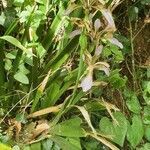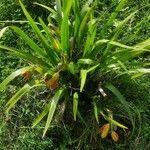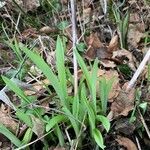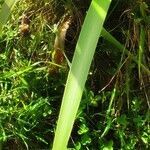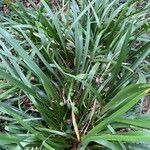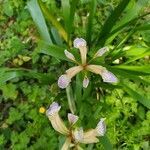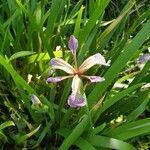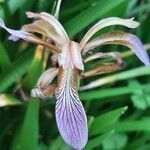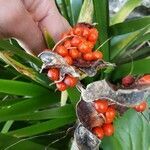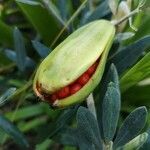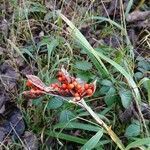Evergreen herb. Rhizome 1-1.5 cm diam. Basal leaves ensiform, 30-70 cm long, 1-2.5 cm wide, malodorous when bruised. Scape 30-90 cm tall, unbranched, with 2 or 3 reduced leaves and 2-4, 2-or 3-flowered rhipidia. Spathes lanceolate, c. 6 cm long, herbaceous. Flowers dull purple-grey to brownish yellow, dark-veined; pedicels 2-7 cm long. Perianth tube c. 1 cm long. Sepals 4.5 cm long, c. 1.5 cm wide, recurved, obovate, emarginate. Petals erect, oblanceolate, 4 cm long. Anthers c. 16 mm long, exceeding stigmas. Style branches spathulate, 3 cm long; crests obtuse. Capsule obovoid, acute, c. 6 cm long. Seeds globose, 5 mm diam., smooth, bright red, persistent on valves of dehisced capsule.
A perennial plant. It has fleshy stems. It grows 45-60 cm high and 30-60 cm across. The leaves are dark green. They have a distinctive smell when crushed. The leaves are sword shaped and pointed. The flowers are small and purplish-brown. They are 5-7 cm long. They are on a flattened stem with 2-3 short branches. The fruit are pods which split open to reveal orange seeds.
